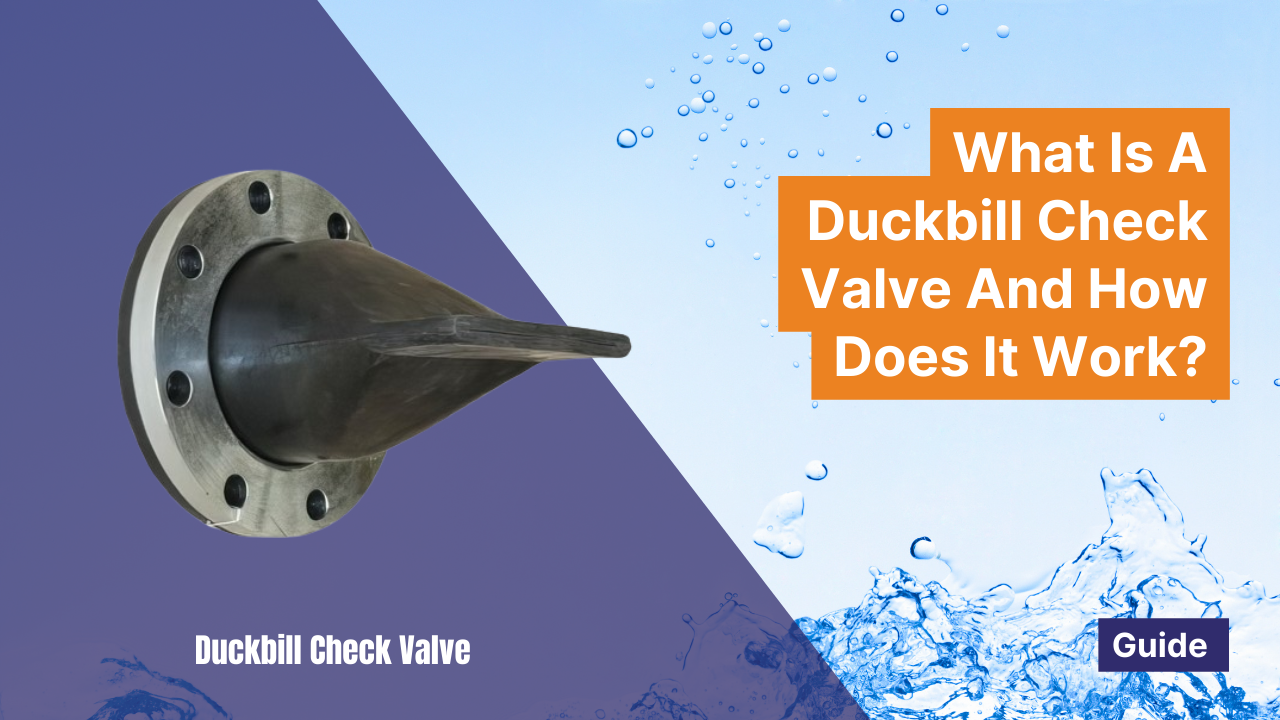
What Is A Duckbill Check Valve And How Does It Work?
In fluid dynamics, where liquids or gases are carefully controlled, the humble duckbill check valve emerges as a silent hero. Its unassuming appearance misrepresents its remarkable functionality, serving as a crucial component in various systems where backflow prevention is paramount.
What Constitutes a Duckbill Check Valve?
At first glance, a duckbill check valve appears deceptively simple, resembling a miniature rubber duck's bill, hence its name. However, its design is precisely engineered to fulfil its essential function. Composed primarily of elastomeric materials such as rubber or silicone, the valve features a tapered bill-like structure with a thin slit or orifice at one end. This unique configuration enables fluid flow in one direction while obstructing reverse flow, akin to the behaviour of a duck's bill when feeding.
The elasticity of the valve material allows the slit to flex open under forward pressure, permitting fluid passage. Conversely, when the flow ceases or reverses, the slit naturally closes, forming a seal to prevent backflow. This inherent flexibility and self-sealing mechanism make duckbill check valves highly efficient and reliable in controlling fluid movement.
Why Do We Need Duckbill Check Valves?
The primary purpose of a duckbill check valve is to maintain the integrity of fluid systems by preventing the reversal of flow. Backflow can lead to contamination, system damage, or operational inefficiencies in various industries, such as wastewater management, sewage systems, and hydraulic applications. Duckbill check valves act as vital safeguards, ensuring that fluids flow in the intended direction while inhibiting the undesirable return of contaminants or pressure surges.
Furthermore, these valves find extensive use in medical devices, automotive systems, and even household appliances, where maintaining proper fluid control is essential for functionality and safety. Whether regulating the flow of fluids in a heart-lung machine or preventing floodwater from infiltrating drainage systems, duckbill check valves play a crucial role in safeguarding human lives and infrastructure.
How Does a Duckbill Check Valve Operate?
The operation of a duckbill check valve hinges upon fluid mechanics principles and elastomeric behaviour. When fluid pressure exceeds a certain threshold in the desired direction, it forces the slit of the valve open, allowing unimpeded flow. This process occurs seamlessly without external intervention, making duckbill check valves inherently passive and low-maintenance components. As the fluid flow subsides or attempts to reverse, the elasticity of the valve material ensures that the slit reverts to its closed position, effectively sealing off the passage. This instantaneous response to changes in flow direction ensures that backflow is prevented, maintaining system efficiency and integrity. The simplicity of this mechanism belies its effectiveness, making duckbill check valves indispensable in numerous industrial and commercial settings.
Ensuring Optimal Performance of Duckbill Check Valves
Despite their robust design and reliable operation, duckbill check valves, like any mechanical component, require periodic maintenance to ensure optimal performance and longevity. One crucial maintenance aspect involves regular inspection to detect signs of wear, tear, or degradation in the valve material. Over time, exposure to harsh chemicals, extreme temperatures, or abrasive fluids can compromise the integrity of the elastomeric components, leading to diminished sealing capabilities.
Additionally, cleaning the valve periodically to remove debris, sediment, or biofilm buildup is essential for preventing obstructions that could impede its functionality. Maintenance intervals may vary depending on the application and operating conditions, but a proactive approach to upkeep is key to avoiding costly downtime or system failures. By adhering to recommended maintenance practices and promptly addressing any issues, operators can ensure the continued reliability and effectiveness of duckbill check valves in their respective systems.
Conclusion
In the vast ecosystem of fluid dynamics, where precision and reliability are paramount, duckbill check valves quietly perform their vital function. Their ingenious design and seamless operation mitigate the risk of backflow, safeguarding equipment, infrastructure, and environmental integrity. From wastewater treatment plants to medical devices, these unassuming yet indispensable components ensure the smooth and efficient flow of liquids and gases.
Contact Us
Don't hesitate to contact us if you have any questions about our duckbill check valves by emailing sales@pvl.co.uk or calling +44 (0) 1892 66 44 99


